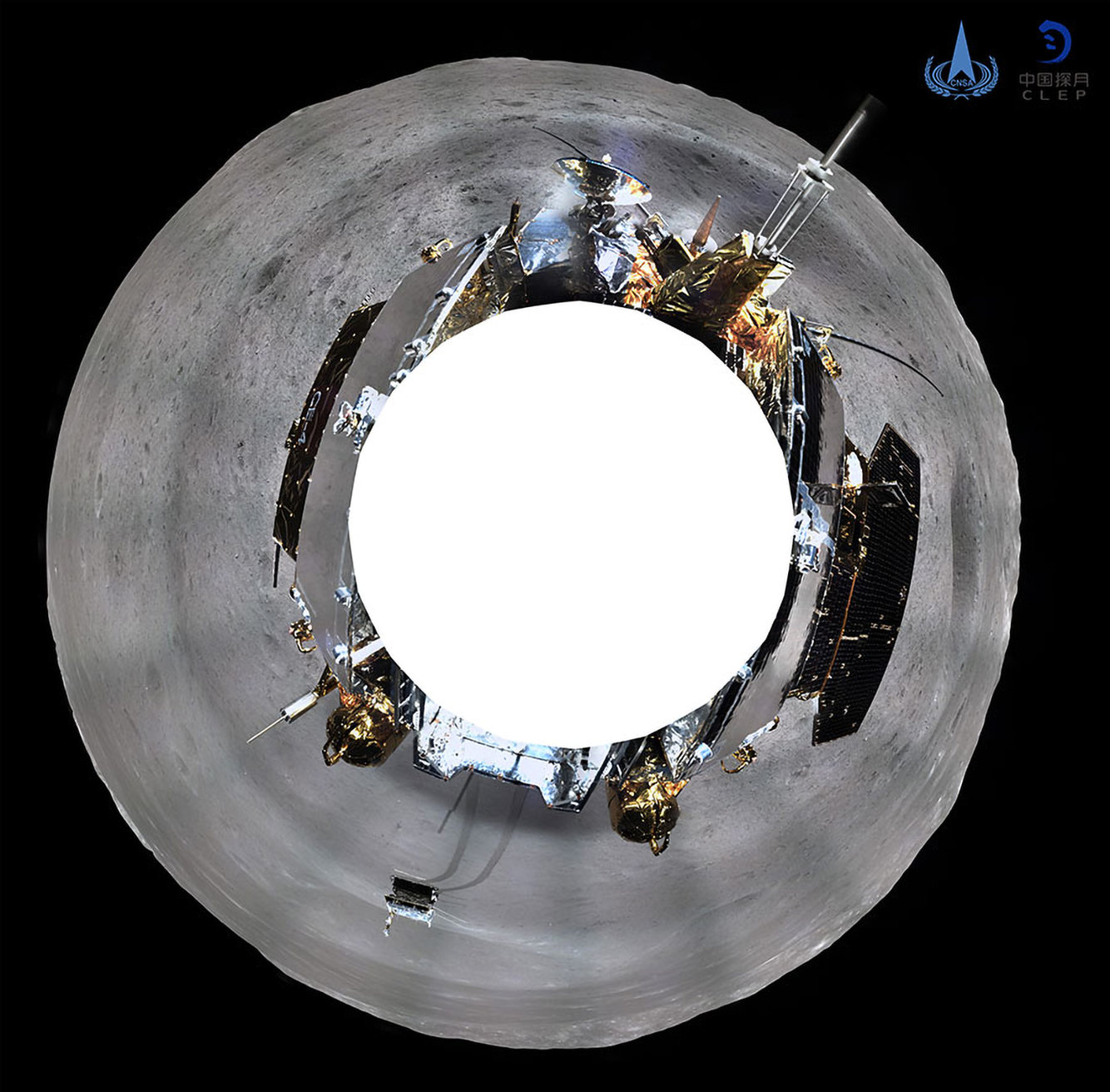On January 3, 2019 China landed on the far side of the moon and has shared images from the Yutu 2 rover including a 360-degree panorama of the landing site.

Before starting its six-month research, the Chang’e 4 mission took a “noon nap” for three days. This helped the mission survive the “high noon” environment on the moon, which sees temps exceed 240 degrees Fahrenheit and could damage the spacecraft. The nap ended on Thursday.
One of the first priorities of the mission, Business Insider reports, was to photograph the landing site. The images showcase the moon landscape and feature a large crater called the Von Kármán with a diameter of about 111 miles.

There just might be something of interest at the bottom of the crater: “It’s possible this basin is so deep that it contains material from the moon’s inner mantle,” Tamela Maciel, an astrophysicist at the National Space Center in England, tweeted after the mission launched last month. “By landing on the far side for the first time, the Chang’e-4 lander and rover will help us understand so much more about the moon’s formation and history.”

Chinese scientists are hoping to learn more about the moon’s formation, if there is water on the rock, scan the sky for radio signals, as well as grow silkworms in a self-contained ecosystem.
The mission, the fourth in a decade-long program, is named after Chang’e, the mythical lunar goddess.
Thanks for reading InsideHook. Sign up for our daily newsletter and be in the know.


















